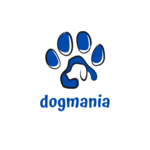Transitioning your dog to a raw food diet can be a game-changer for their health and vitality. This dietary shift is gaining popularity among pet owners who are looking for natural, nutrient-dense food options. Here’s a comprehensive guide to help you navigate this transition smoothly.
Understanding the Raw Food Diet
A raw food diet for dogs typically includes raw meat, bones, fruits, and vegetables. This approach mimics the diet of wild canines and is believed to provide numerous health benefits. Proponents argue that raw diets can improve coat quality, dental health, and energy levels while reducing the risk of certain diseases.
Benefits of a Raw Food Diet
1. Improved Digestion: Raw foods are more natural for a dog’s digestive system. They contain enzymes that aid in digestion, making it easier for your dog to absorb nutrients.
2. Healthier Coat and Skin: Many dog owners report shinier coats and healthier skin after switching to raw food. This is due to the high-quality proteins and essential fatty acids found in raw meat.
3. Increased Energy Levels: A diet rich in natural proteins and fats can lead to higher energy levels and improved overall vitality.
4. Better Dental Health: Chewing raw bones can help keep your dog's teeth clean and strong, reducing the risk of dental diseases.
Preparing for the Transition
Consult Your Veterinarian
Before making any significant changes to your dog’s diet, it’s crucial to consult your veterinarian. They can provide personalized advice based on your dog's specific health needs and ensure that the new diet is nutritionally balanced.
Research and Plan
Educate yourself about the raw food diet. There are various models, such as the BARF (Biologically Appropriate Raw Food) diet and the prey model. Each has its guidelines on the types and ratios of food to include. Planning is essential to ensure your dog receives a balanced diet.
Start Slowly
Abrupt changes can upset your dog’s digestive system. Begin by introducing small amounts of raw food alongside their current diet. Gradually increase the raw food portion over a few weeks while decreasing their previous diet. This allows their digestive system to adjust without causing gastrointestinal distress.
Choosing the Right Ingredients
Protein Sources
Quality is key when selecting proteins. Options include:
- Beef
- Chicken
- Turkey
- Lamb
- Fish
Ensure the meat is fresh and free from hormones and antibiotics.
Fruits and Vegetables
Incorporate a variety of fruits and vegetables to provide essential vitamins and minerals. Safe options for dogs include:
- Carrots
- Apples (without seeds)
- Blueberries
- Pumpkin
- Spinach
Supplements
While a raw food diet is nutritionally dense, some dogs may require supplements to meet all their dietary needs. Common supplements include:
- Fish Oil: For omega-3 fatty acids.
- Probiotics: To support digestive health.
- Calcium: If your dog isn’t consuming enough bones.
Monitoring and Adjusting
Pay close attention to your dog’s reaction to the new diet. Look for signs of improved health, such as increased energy, a shinier coat, and better digestion. However, also watch for any adverse reactions, such as allergies or digestive issues.
Frequent veterinary check-ups are essential during the transition period. Your vet can monitor your dog’s health and make any necessary dietary adjustments. Blood tests can help ensure that your dog is receiving all the essential nutrients.
Each dog is unique, and what works for one might not work for another. Be prepared to adjust the types and amounts of food based on your dog’s individual needs and preferences.
Common Challenges and Solutions
Some dogs may be reluctant to try new foods. If your dog is a picky eater, try different protein sources or mix raw food with their favorite kibble initially. Gradually reduce the kibble as they become more accustomed to the raw diet.
Preparing raw meals can be time-consuming and expensive. To manage costs, buy in bulk and freeze portions. Meal prepping can also save time. Consider joining a co-op or community group for bulk purchasing discounts.
Handling raw meat comes with the risk of bacterial contamination. Always practice good hygiene by washing your hands and cleaning surfaces thoroughly after preparing your dog’s meals. Store raw food in a dedicated section of your refrigerator or freezer to prevent cross-contamination.
conclusion
Transitioning your dog to a raw food diet can offer numerous health benefits, but it requires careful planning and monitoring. By consulting with your veterinarian, choosing high-quality ingredients, and observing your dog’s health, you can make this dietary shift a success. Remember, patience and flexibility are key. With the right approach, you can provide your dog with a nutritious diet that supports their overall well-being and longevity.
Embrace this fresh start and enjoy the journey towards a healthier, happier life for your furry companion.



leave me your thoughts here